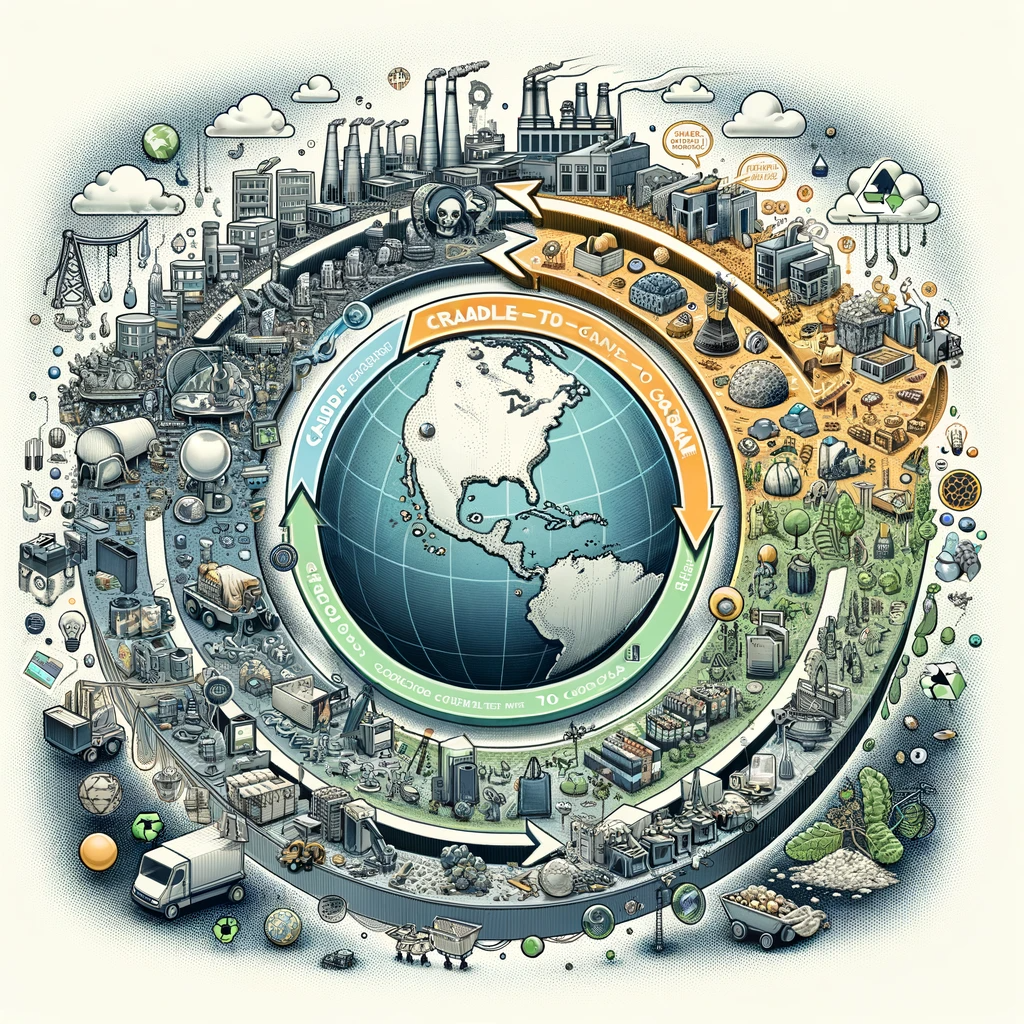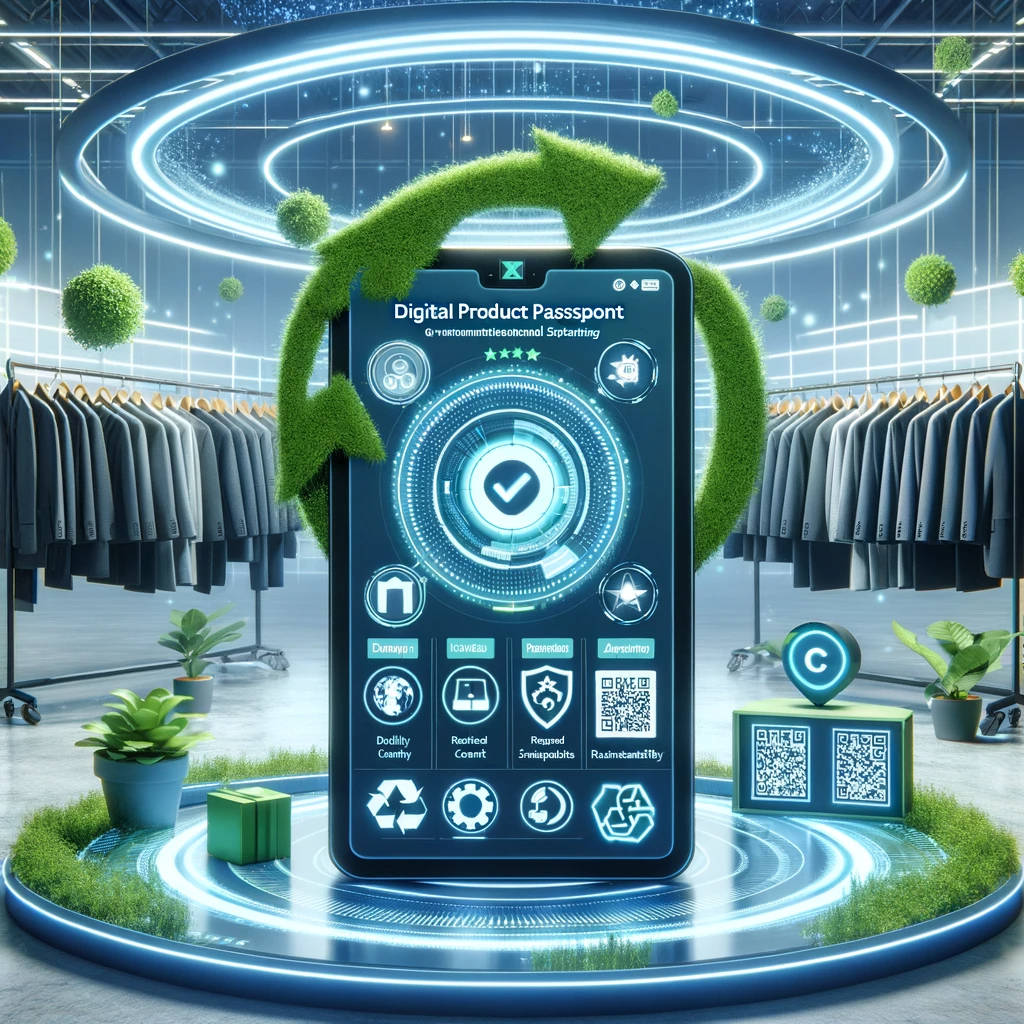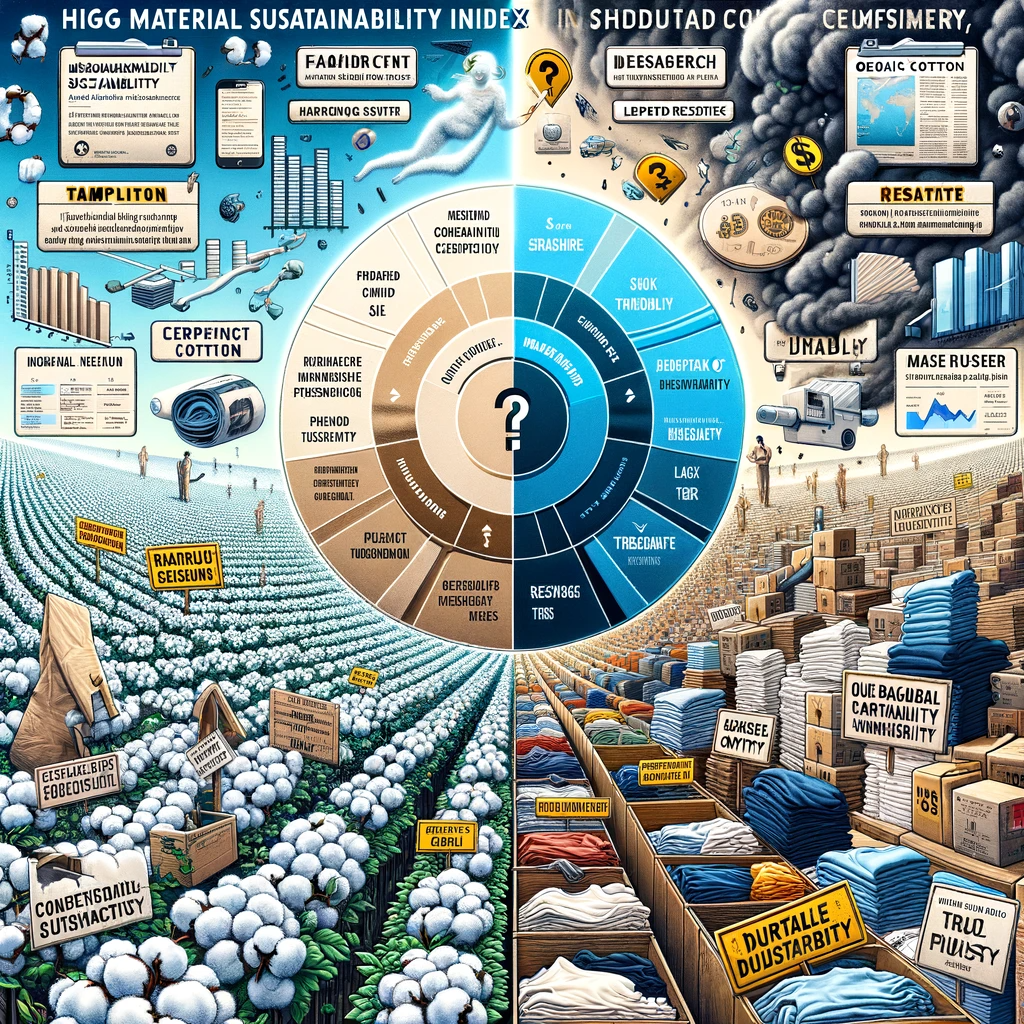BY CHRIS JONES | NOVEMBER 15, 2023 | 10 MINUTE READ
The fashion industry faces a growing imperative to embrace sustainability and circularity as consumers, activists, NGOs, and governments demand a more responsible approach to fashion production. The industry must move from the take-make-dispose model to circular fashion. Circular fashion aims to minimise waste, promote sustainable materials, and extend the lifecycle of garments. Achieving these goals requires a significant shift in how brands design, produce, and manage their products. Fashion Product Lifecycle Management (PLM) systems have emerged as valuable tools to help fashion brands transition to circular fashion practices. In this article, we will explore how Fashion PLM can assist brands in implementing circular fashion strategies, focusing on sustainable materials, waste reduction, and recycling/upcycling initiatives.
How do we measure sustainability and circularity?
A critical aspect of any improvement programme is using a consistent measurement methodology to compare baseline and improvements. So, what are the standardised measuring methodologies for sustainability?
There are many individual data points related to sustainability, such as CO2 equivalent emissions (CO2e); energy usage; water usage; water effluent generated; labour rights, workers' treatment, and fair wages; treatment of local environment and community; waste materials; dumped products; durability, reuse, repair, and recycling of products. Many new startup companies have methodologies to capture and collate primary data and provide software to calculate, analyse, and compare several data points.
However, comparing rows of data for each product within a single category is confusing and time-consuming. And, for consumers, this would not be easy to interpret. Therefore, a simple and easily understandable ‘holistic’ measure is required to enable consumers to assess and compare the ‘sustainability’ of multiple products. Fashion companies could use more granular and complex data to help deeper analysis. Yet, simplicity is still required to rapidly compare many products within a season and roll up to a category, region, season, and annual figure to enable comparison for internal analysis and regulatory compliance evidence.

powered by DALL·E 3
Standardisation to enable comparison of products
Life Cycle Assessment (LCA) is a methodology used to evaluate the environmental impact of a product throughout its entire life cycle, from raw material extraction to disposal. It is a tool that can be used to identify areas where improvements can be made to reduce the environmental impact of a product. LCA can assess the circularity sustainability of fashion products by evaluating their environmental impact at each stage of their life cycle, including using sustainable materials, reducing waste, and using renewable energy sources.
The life cycles can vary by product, company, and industry but can be summarised in three variations, where the discrete life cycle stages may also vary:
Cradle-to-gate: This model covers the environmental impact of a product from raw material extraction to the point where it leaves the factory. It includes the upstream value chain, such as land use, water consumption, energy use, emissions, and waste generation.
Cradle-to-grave: This model covers the environmental impact of a product from raw material extraction to the end of its life, including repair and reuse to extend life and disposal and recycling. It includes the downstream value chain, such as transport, distribution, use, repair, and end-of-life treatment.
Cradle-to-cradle: This model covers the environmental impact of a product from raw material extraction to the point where it is recycled or reused as a new product. It aims to create a circular economy where products are designed to be recycled or regenerated without generating waste or pollution.
Standardisation is an essential element of LCA, as it ensures that the methodology and life cycle stages used to evaluate the environmental impact of a product are consistent and transparent. This allows for comparisons between different products and helps identify areas where improvements can be made.

powered by DALL·E 3
Regulation offers a path to Standardisation
The EU’s Digital Product Passport (DPP) is a new initiative to provide information about a product’s environmental sustainability. The DPP is an element of the broader Ecodesign regulation that will establish a framework for setting ecodesign requirements for sustainable products. The passport will include attributes such as durability and reparability, recycled content, or the availability of spare parts of a product. While the passport is not explicitly designed to provide standardisation for circularity comparison, it could help to improve transparency and traceability in the fashion industry, and it will define the labelling and data requirements for products via QR codes and NFC tags. This could help to identify areas where improvements can be made to capture and collate data from the manufacturing processes and further identify areas to reduce the environmental impact of fashion products and promote circularity sustainability.
The European Commission originally published the proposed “Ecodesign for Sustainable Products Regulation” (ESPR) on 30 March 2022. It aims to establish a framework to set ecodesign requirements for specific product groups to significantly improve their circularity, energy performance and other environmental sustainability aspects. It will enable setting performance and information requirements for almost all categories of physical goods placed on the EU market (notable exceptions are food and feed). The Council of the EU adopted its position (‘general approach’) towards the Ecodesign regulation on 22 May 2023, with the next step for the EU Parliament to adopt its position. Details of DPP regulation are expected in 2024, though an exact date has not been published. The DPP regulations will require using Digital IDs for products by 2030. Given the complexity of collating the data from across the fragmented and complex Fashion supply chain, fashion companies must begin to address these proposed requirements as soon as feasible.

powered by DALL·E 3
Connected workflows and data
Software companies are working hard to create solutions to capture the primary data, enable digital IDs and associated data for DPP, and apply LCA methodologies for holistic sustainability measurement. Whether individual software companies can offer a single comprehensive product suite that provides all elements to measure ‘holistic’ sustainability is yet to be seen, though this is unlikely. Data capture methodologies and software solutions will likely be integrated with a tool like Fashion PLM at its hub to provide a holistic view.
The data challenge
Fashion companies already understand the difficulties and costs of collecting data. Enabling transparency and traceability across the entire fashion supply chain requires capturing data down to Tier 6. To put this into context, most brands don’t know all the Tier 2 partners supplying materials for their products. Only Mango has published a list of their Tier 3 partners. However, even for Mango, Tiers 4, 5, and 6 remain ‘unknown’.
The depth and breadth of this data collection is something that the brands cannot perform alone. Collation is possible only by leveraging partnerships with companies that provide methodologies to capture this data, software, and technologies to exchange and share this data.
Blockchain: enabler of transparency and permanence
One of the greatest threats to transparency is anonymous data. Unfortunately, the data IDs of objects and records can be altered. As stated in a Forrester study, “Supply chain data is not always visible, available or trusted”.
The technology that guards against anonymising data is Blockchain. Blockchain provides an online, open-source distributed ledger where transactions between stakeholders can be recorded and updated simultaneously and in real-time.
A blockchain distributed ledger provides the following;
- Decentralised control.
- Permanence and transparency.
- Prevents tampering to ensure data is verifiable.
- Open access.
- Increased efficiency and reduced waste.
Blockchain can enable the transparent distribution of supply chain data, promote circular resource flows, reduce waste, and inform decision-making for a circular economy. This concept has been proven with several proof-of-concept programmes in the fashion industry. However, mass adoption will require a mindset shift from significant players in the industry.

powered by DALL·E 3
Sustainable Material Sourcing
One of the foundational elements of circular fashion is using sustainable and eco-friendly materials. Fashion PLM can play a vital role in helping brands identify, source, and integrate these materials into their product offerings. PLM systems facilitate the selection and tracking of sustainable materials throughout the product lifecycle by providing a centralised platform for data and collaboration. Various Fashion PLM vendors have already partnered with or acquired specialist software companies that enable brands and manufacturers to find and track materials using the latest resources and data to assess sustainability credentials.
Fashion PLM allows brands to catalogue and assess materials' environmental and ethical impact, helping them make informed decisions. It enables collaboration with suppliers, ensuring that sustainable materials are readily available and meet the desired quality and durability standards. Through integrated sourcing and procurement features, PLM systems streamline identifying and acquiring eco-friendly materials, contributing to the brand's circular fashion goals.

powered by DALL·E 3
Navigation of some Materials Sustainability issues
However, progress with tools to measure material sustainability has not been smooth. For example, the Sustainable Apparel Coalition (SAC) Higg Index MSI (Material Sustainability Index), based on the Higg MSI developed by Nike and incorporated into the SAC Higg Index in 2012, provided significantly better visibility of Material sustainability for brands. Given the difficulty in capturing primary process data from the fashion supply chain at the time, templated data was used for the Higg MSI. However, the issue with templated data is that it will not correctly reflect the resources used for every material in a category without regular updates. In the ten years since its incorporation into the Higg Index, neither regular research and updates nor the capture of primary process data for specific materials were added to the tool. These issues were highlighted in 2022 when the Norwegian Consumer Authority warned H&M and Norwegian brand Norrøna that using the Higg MSI data in marketing claims about their products’ sustainability credentials can “easily be considered misleading” as it is partly based on outdated research data. Since then, a review by KPMG has questioned the fitness for purpose of the Higg MSI as a stand-alone tool.
There have also been fraudulent certification claims for organic cotton, with Terry Townsend reporting numerous anomalies that should raise suspicions. The main benefit for farmers of organic cotton is price premiums. Without consistent and timely primary data used to calculate the true sustainability of each crop, the fraudulent certification and raised prices may continue. The capture of primary data, including labour information, may also resolve other issues, such as those experienced by Nike, Adidas, Shein, and Temu when those companies were sent letters from the US Government China House Committee about forced labour used in picking cotton, or previously banned cotton, used in their products sold in the US. The root cause of potentially severe consequences for these businesses is a lack of visibility in Tiers 4, 5, and 6 of the fashion supply chain.
And one final thought for materials sustainability. To have circular sustainability, a material not only needs to be produced with minimal resources, but it must also be durable. Researchers at Leeds University have found that t-shirts costing as little as £5 are more durable than those costing ten times more. The report identifies that consumers need to be better educated about quality, as “You can’t greenwash quality”. Measuring durability in materials and product sustainability will help consumers comprehend this dimension of circularity better.

powered by DALL·E 3
Reducing Waste through Efficient Design and Production
Circular fashion emphasises the importance of minimising waste at every stage of the product lifecycle, from design and manufacturing to distribution and disposal. Fashion PLM supports this objective by optimising the design and production process. It encourages designers and product developers to adopt eco-friendly practices, such as pattern optimisation, minimising waste via fabric optimisation, digital printing to manage smaller orders, and many other efficient manufacturing techniques.
Fashion PLM systems connect with 3D modelling and virtual prototyping tools, allowing designers to visualise and validate their designs before producing physical samples. This helps in reducing the number of sample iterations, ultimately minimising fabric waste and energy consumption. Fashion PLM promotes a more efficient workflow that aligns with circular fashion principles by streamlining communication and collaboration across design, development, and production teams.

powered by DALL·E 3
Extending the life of products
Repair and reuse are critical elements of circularity because they prevent or delay products and materials from going to landfills, where they would generate emissions and waste resources. Repair and reuse can reduce energy demand and save costs for consumers and businesses by keeping products in use for longer. Repair and reuse also create social benefits by providing jobs, skills, and community engagement.
It is critical for circularity that Fashion brands consider repair and reuse in the design of products and the availability of repair options, whether directly via their organisation or in partnership.
Recycling and Upcycling Initiatives
Circular fashion also involves finding innovative ways to recycle and upcycle clothing to extend its lifespan. Fashion PLM can support brands in implementing recycling and upcycling initiatives by tracking product information and facilitating the identification of materials that can be repurposed.
With Fashion PLM systems, brands can document the composition and details of each garment, making it easier to identify reusable or recyclable components. This information can be crucial for future redesigns or recycling programs. Additionally, PLM enables better traceability and transparency in the supply chain, helping brands establish efficient processes for collecting and processing used garments.
Conclusion
Fashion PLM has evolved from a product development and supply chain management tool to a crucial asset in the journey towards circular fashion. It empowers brands to make sustainable material choices, reduce waste in design and production, and implement recycling and upcycling initiatives effectively.
By leveraging Fashion PLM, fashion brands can align with circular fashion principles, reduce their environmental footprint, and meet the growing consumer demand for sustainable and responsible products. As the fashion industry continues to evolve, Fashion PLM systems will be at the forefront of helping brands achieve their circular fashion goals and contribute to a more sustainable future for fashion.
Author Chris Jones
For over three decades, Chris has helped global brands, retailers, and manufacturers align people, processes, and technology, driving transformation projects to maximise business impact.
This article is also published on LinkedIn: Embracing Circularity: How Fashion PLM Paves the Way for Sustainable Fashion Futures (www.LinkedIn.com)


